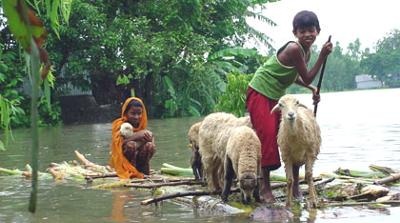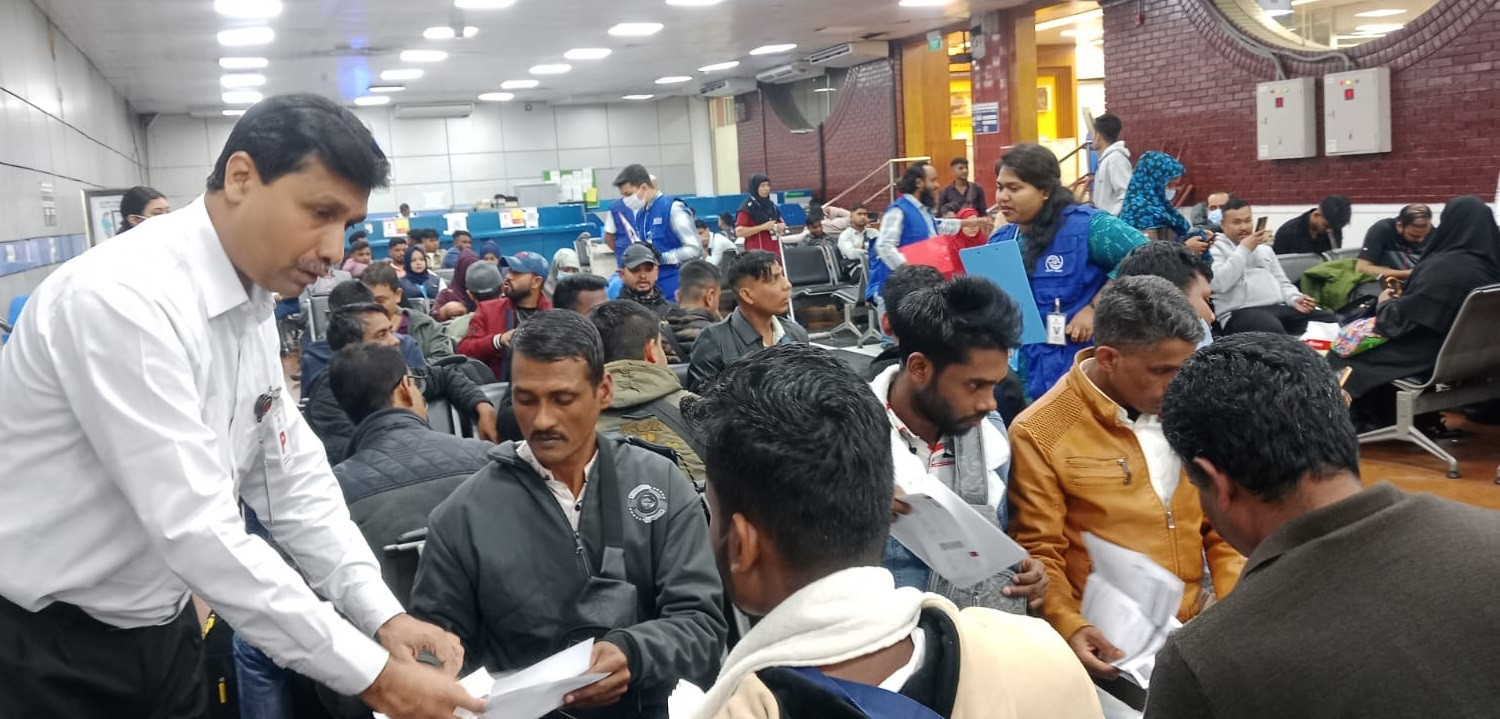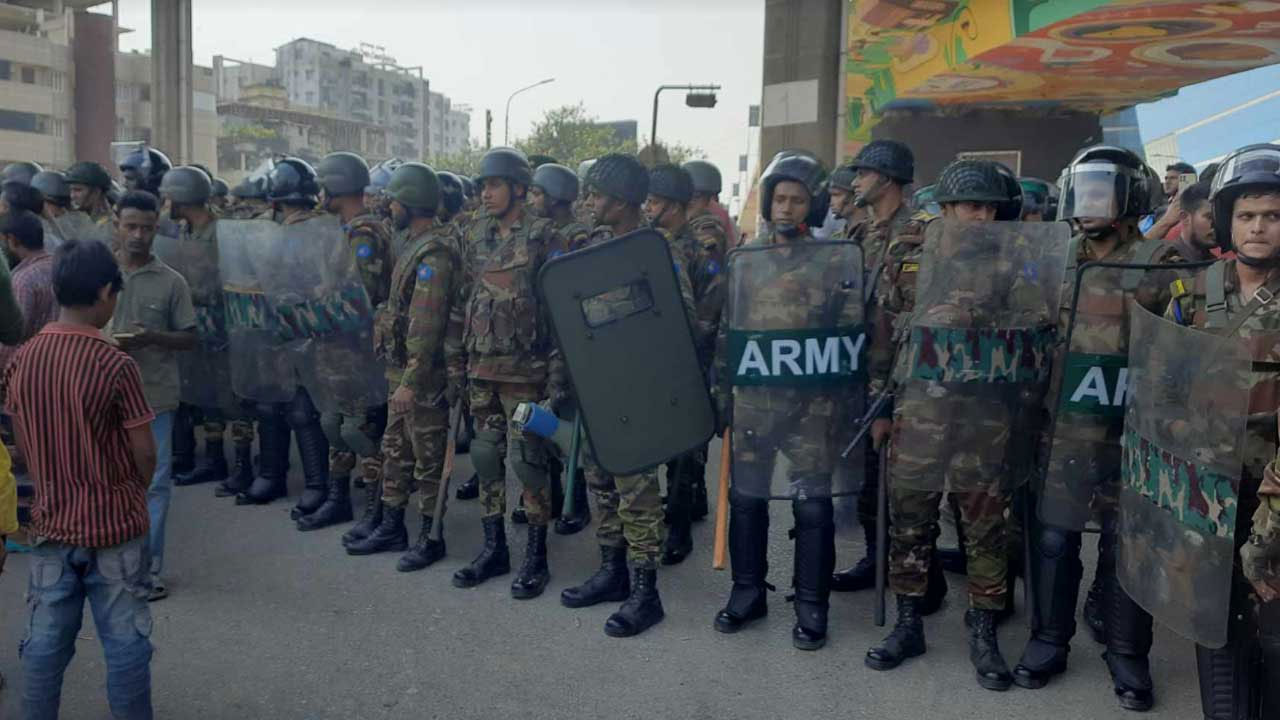Before flood swamped over a third of Bangladesh, destroying vast standing crops and sweeping away thousands of houses, people were already struggling to put up with the challenges brought about by the coronavirus crisis.
The virus crisis had already stripped hundreds of thousands of people of their income and many of them had returned to their country homes after losing jobs in cities.
But life was no less difficult at countryside either with a slump in rural economic activities following disruptions in agricultural value chains caused by the coronavirus crisis. ‘I knew my happy days were numbered after the coronavirus emerged. But what I did not know was that I would be homeless soon,’ said Amzad Hossain, a resident of Hatiar Char, Olipur, Kurigram.
Besides farming, Amzad ran a big grocery shop at Hatiar Bazar and was known as a solvent farmer-cum-grocer.
But his income from the grocery shop fell rapidly as farmers not being able to sell their produces lacked the cash to buy from him.
In just three months after the coronavirus emerged in the country in early March Amzad was planning to shut down his grocery when the flood hit in late June.
‘The flood came out of nowhere and swept away my home, 2.8 tonnes of rice I had in the stock and all the six of my cows,’ said Amzad.
In early July a Concern Worldwide survey warned that the flood would impact communities more severely than ever before because the coronavirus crisis would eventually turn 72 per cent of the people surveyed jobless.
Even before the flood hit, economists said that the coronavirus crisis turned 20 million people jobless by April, nearly a third of the total number of people working in the country.
They said that those who lost jobs were largely employed in the informal sector, which accounts for 85 per cent of the country’s employment generation.
‘I came back home to start afresh as a farmer. But all I see now is water all around,’ said Jahangir, who returned to his country home in Dewanganj of Jamalpur after living in Dhaka as a street vendor for the last decade.
His housemaid wife and garment workers son and daughter all lost their jobs because of the coronavirus.
A large number of informal sector jobs come through agricultural activities which got severely hampered with more than a third of the country facing the worst flooding in two decades.
Although flood waters have started receding, thousands still live on embankments and flood shelters with vast areas still remaining under water. Many of them would not be able to get back to normal life soon for their homes and land were devoured by erosion.
According to official estimate, the flood has destroyed crops on more than 50,000 hectares in Rangpur alone and washed away nearly 30,000 fish farms and affected 3,000 livestock farmers.
Many of them had mortgaged their crops or land at high interests to microcredit lenders for loans to invest in their farms. They had hoped for a rebound in economic activities after the government lifted the lockdown restrictions in late May, less than a month before the flood hit.
‘My nights go sleepless not because I live on rooftop with my family but for I keep defaulting on my loan repayments,’ said Abdul Kuddus, a small cattle farmer of Char Rajibpur, Kurigram, who has borrowed Tk 12,000 from an NGO at a weekly instalment of Tk 400.
Kuddus has been stranded in water since the beginning of the flood and at one point he sold his cattle at throwaway prices because he could not afford them fodder and a place to live.
The agriculture ministry said that the flood destroyed crops on 1.54 lakh hectares of land in 36 districts and feared that many farmers might not grow next crops in time because of the lingering flood.
The government has already urged microcredit lenders to reschedule loans in cases of borrowers badly hit by the flood or the coronavirus crisis.
Low-lying chars represent a heavy concentration of microcredit borrowers. In Rangpur alone there are 654 chars, mostly entirely under flood waters.
The char dwellers would be the last to return home for their place would be the last to surface from under the flood waters. They would need time to bring back to cultivation their land covered in thick layers of mud.
‘Over two lakh people, many of whom bear high-interest loans, lost their income after losing fish farms to the flood,’ said Faisal Azam, assistant director, Department of Fisheries, Rangpur.
Dhaka University’s Institute of Disaster Management and Vulnerability Studies associate professor Khalid Hasan called for a robust disaster response along with a strong economic recovery plan to help the poor stand back on their feet.










